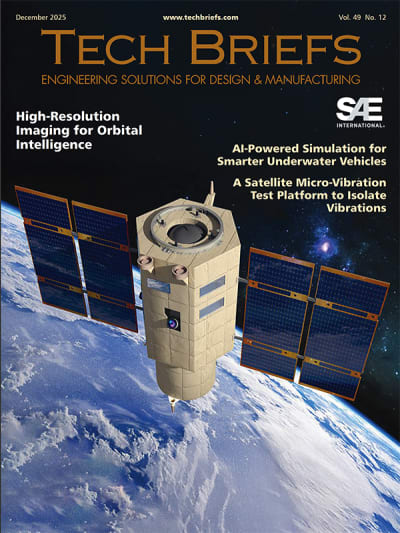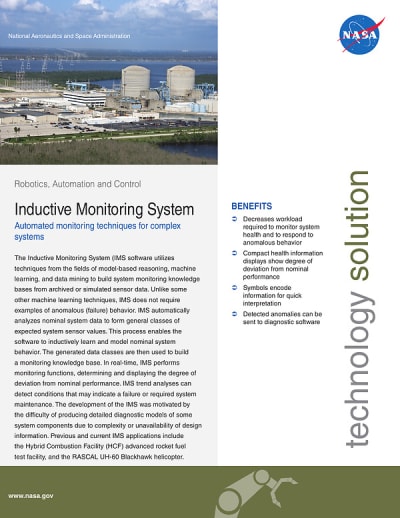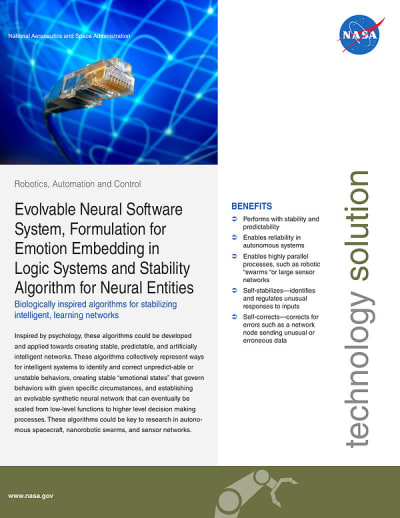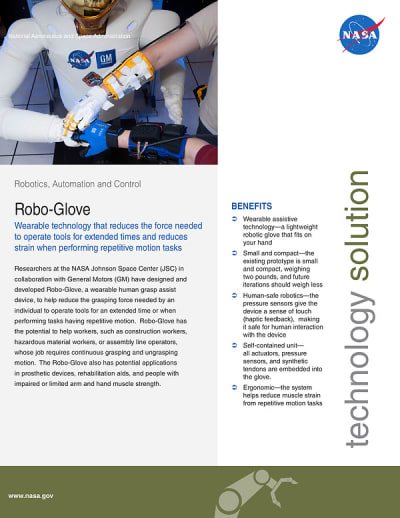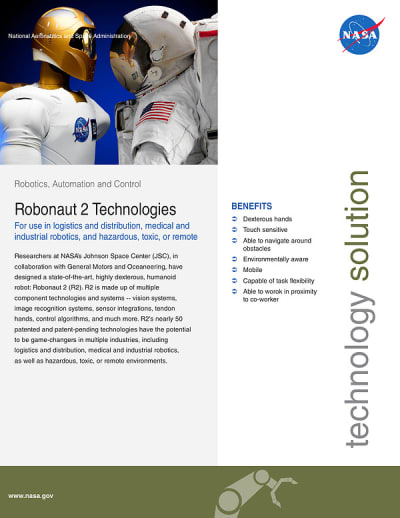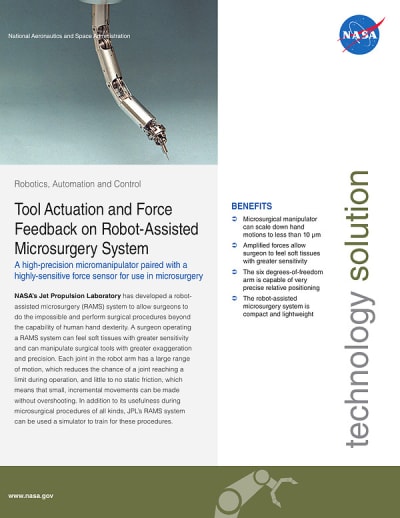Inductive Monitoring System
IMS software utilizes techniques from model-based reasoning, machine learning, and data mining to build system-monitoring knowledge bases from archived or simulated sensor data. In real time, IMS performs monitoring functions, determining and displaying the degree of deviation from nominal performance. IMS trend analyses can detect conditions that may indicate a failure or required system maintenance.
Evolvable Neural Software System, Formulation for Emotion Embedding in Logic Systems, and Stability Algorithm for Neural Entities
These algorithms could be developed and applied towards creating stable, predictable, and artificially intelligent networks. They collectively represent ways for intelligent systems to identify and correct unpredictable or unstable behaviors, and could be key to research in autonomous spacecraft, nanorobotic swarms, and sensor networks.
Robo-Glove
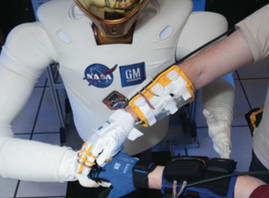 NASA, in collaboration with General Motors, has designed and developed Robo-Glove, a wearable human grasp assist device, to help reduce the grasping force needed by an individual to operate tools for an extended time or when performing tasks having repetitive motion. It can help construction workers, hazardous material workers, or assembly line operators whose jobs require continuous grasping and ungrasping motion. It also has applications in prosthetic devices, rehabilitation aids, and for people with impaired or limited arm and hand muscle strength.
NASA, in collaboration with General Motors, has designed and developed Robo-Glove, a wearable human grasp assist device, to help reduce the grasping force needed by an individual to operate tools for an extended time or when performing tasks having repetitive motion. It can help construction workers, hazardous material workers, or assembly line operators whose jobs require continuous grasping and ungrasping motion. It also has applications in prosthetic devices, rehabilitation aids, and for people with impaired or limited arm and hand muscle strength.
Robonaut 2 Technologies
 Robonaut 2 is a highly dexterous humanoid robot made up of multiple component technologies and systems such as vision systems, image recognition systems, sensor integrations, tendon hands, and control algorithms. It features nearly 50 patented and patent-pending technologies and navigates obstacles, fixed or moving. It handles frequent, random, and unexpected movement of people, products, or equipment, as well as items that vary in shape, weight, and fragility.
Robonaut 2 is a highly dexterous humanoid robot made up of multiple component technologies and systems such as vision systems, image recognition systems, sensor integrations, tendon hands, and control algorithms. It features nearly 50 patented and patent-pending technologies and navigates obstacles, fixed or moving. It handles frequent, random, and unexpected movement of people, products, or equipment, as well as items that vary in shape, weight, and fragility.
Tool Actuation and Force Feedback on Robot-Assisted Microsurgery System
 A robot-assisted microsurgery system allows surgeons to perform surgical procedures beyond the capability of human hand dexterity. A surgeon operating the system can feel soft tissues with greater sensitivity, and can manipulate surgical tools with greater exaggeration and precision. Each joint in the robot arm has a large range of motion, reducing the chance of a joint reaching a limit during operation.
A robot-assisted microsurgery system allows surgeons to perform surgical procedures beyond the capability of human hand dexterity. A surgeon operating the system can feel soft tissues with greater sensitivity, and can manipulate surgical tools with greater exaggeration and precision. Each joint in the robot arm has a large range of motion, reducing the chance of a joint reaching a limit during operation.
Overview
The document outlines NASA's Technology Transfer Program, which aims to maximize the application of NASA's technological advancements for the benefit of U.S. citizens. Through partnerships and licensing agreements with industry, the program ensures that NASA's investments in research lead to secondary uses that enhance the economy, create jobs, and improve quality of life.
A significant focus of the document is on the development of a robot-assisted microsurgery (RAMS) system by NASA's Jet Propulsion Laboratory (JPL). This innovative system is designed to assist surgeons in performing microsurgical procedures that exceed the capabilities of human dexterity. The RAMS system comprises four subsystems: mechanical, electronics, servo-control, and high-level software, along with a user interface. The mechanical subsystem features a slave robot arm with six degrees of freedom, allowing for precise manipulation of surgical tools. The arm is equipped with microforceps and a tip that enables simultaneous sensing of force interactions, enhancing the surgeon's ability to feel soft tissues with greater sensitivity.
The RAMS system is compact and lightweight, making it suitable for various surgical applications. It can scale down hand motions to less than 10 micrometers, providing surgeons with the ability to perform intricate tasks with high precision. The system's design minimizes static friction and backlash, allowing for smooth, incremental movements without overshooting. Additionally, the robot arm's extensive range of motion reduces the likelihood of reaching operational limits during procedures.
The document highlights several potential applications for the RAMS system, including its use in microsurgical training and operations, as well as in virtual reality systems for simulating force interactions. The technology not only enhances surgical capabilities but also serves as a training simulator for aspiring surgeons, thereby improving the overall quality of medical education.
In summary, NASA's RAMS system represents a significant advancement in robotic-assisted surgery, combining cutting-edge technology with practical applications in medicine. The ongoing efforts of NASA's Technology Transfer Program ensure that such innovations can be effectively utilized to benefit society, demonstrating the agency's commitment to improving healthcare and quality of life through technological advancements.
